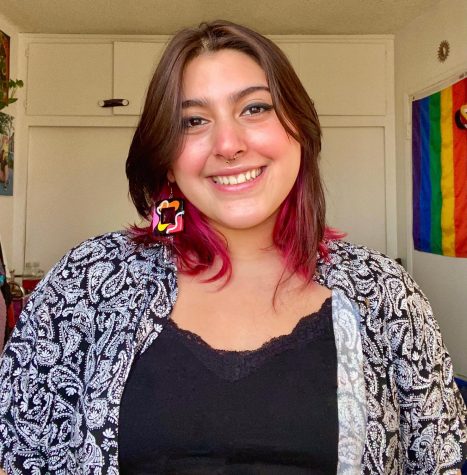The Road to Find: Student Art and Social Justice
YOU ARE NEVER TOO YOUNG TO USE YOUR VOICE AND MAKE A CHANGE
October 31, 2020
George Floyd’s murder in May of 2020 ignited The Black Lives Matter (BLM) movement once again, encouraging many students to speak out on the injustice the Black community has endured for years due to systemic racism.
Not only did the sudden rebirth of the BLM movement motivate adults to take action against racism—primarily in the police force—it also inspired teenagers to become more vocal with their moral and political views. However, there are little to no resources for teenagers outside of their school publication where they can truly express their beliefs to their communities. This is why Sonia Banker, a junior attending San Francisco University High School, created The Road to Find (RTF) and the Arts Justice Council (AJC).
“It basically provides a space for students to reflect on the current climates of our country [as well as provide a space for] producing art that wouldn’t otherwise be [displayed] in a school environment,” Banker said.
The Road to Find is a journal that combines any art form—poetry, drawing, digital art, painting, music, writing, film, etc.—with social justice. Banker’s journal was made possible by her connection to the American Civil Liberties Union of Southern California (ACLU SoCal) as she has been involved with the union through an internship. Both the journal and AJC come hand in hand as the AJC, which consists of 10 members, works with Sonia and the ACLU SoCal in order to create and release editions.
“Each edition revolves around a certain social justice issue… the last edition was the Black Lives Matter movement… This upcoming edition is about the 2020 election and the importance of voting,” Banker said. The first edition, which was based on the BLM movement, was released in August. It features a memoir by Banker and displays artworks that were submitted to the journal.
“In the AJC, we help raise awareness of social justice issues through artistic expression…I’m using my voice effectively by making art to educate viewers about racial injustices, climate change, gun violence, [and more],” Jesica Norris, a student at Santa Cruz High School, said. Her position consists of helping with design, outreach, and forming partnerships with other committees. Norris’ involvement with the AJC and the RTF has provided a space where she has been able to display her art and express her feelings towards social injustices in America.
At times, it is difficult for a teenager to express their political or moral views as adults easily rule out their opinions. “Personally, I think that teenagers who are passionate about fighting against oppression are most likely to listen to what I have to say. I have found that most adults turn a blind eye to what most teenagers have to say about social justice,” explained Norris.
Banker’s foundation of the journal has opened a door for teenagers who feel it is necessary to speak their minds on systemic failures in their communities. “Although we have the ability to educate older generations, I think that an adult’s major responsibility is to listen and do more with this new knowledge, such as physically taking action,” said Norris.
The head of web design for the RTF is Alysha Boone, a 17-year old student attending Foshay Learning Center. She shares the same outlook on adults and teen opinions as Norris, but as the RTF is getting off its feet, the AJC is full of hope. “ I hope to make a difference with the AJC by allowing teens not only find new expressive ways to expand their love for art and social justice but to allow teens to feel heard and be able to uplift their voices and projects and inspire others to speak up for what they feel is right,” Boone said.
In times like these, when people’s rights are at stake, every opinion and voice matters. Students can submit to The Road to Find for the upcoming edition as well as future editions here.
“The AJC is definitely a place where my voice is being heard,” Banker said.


